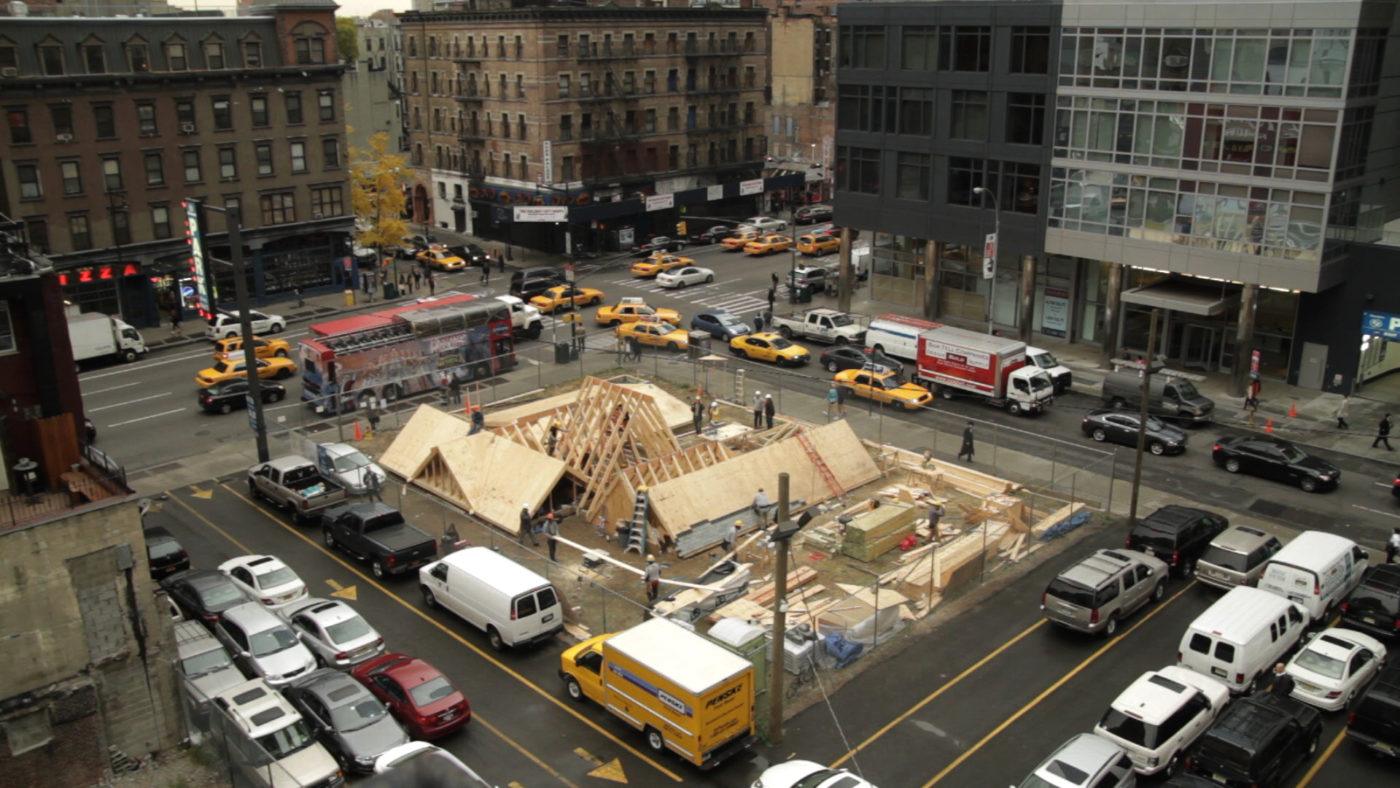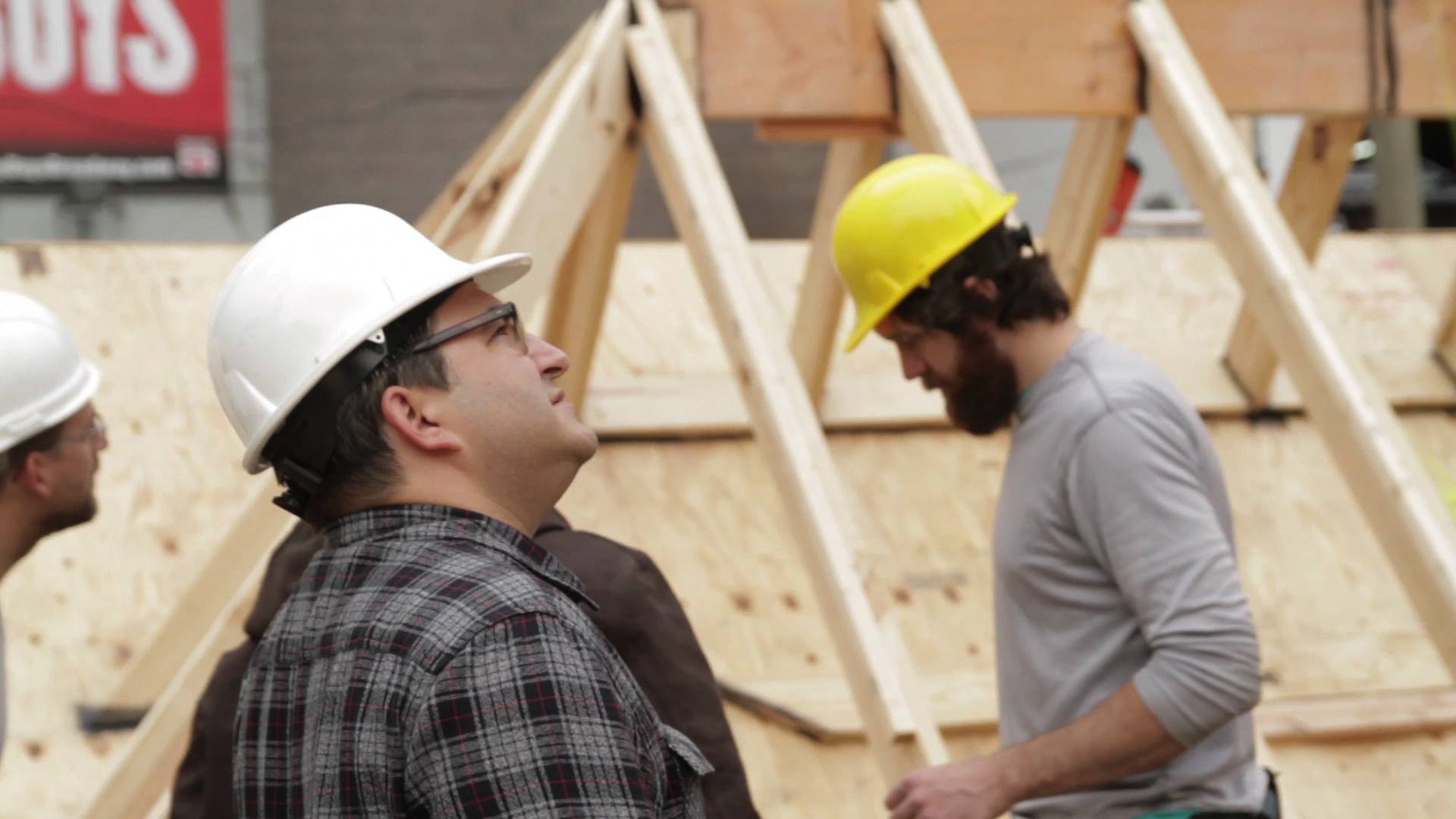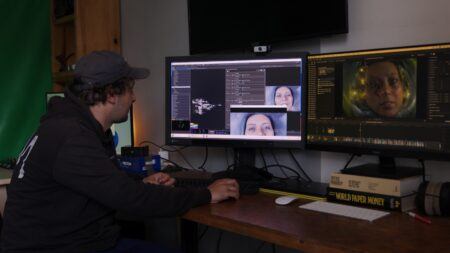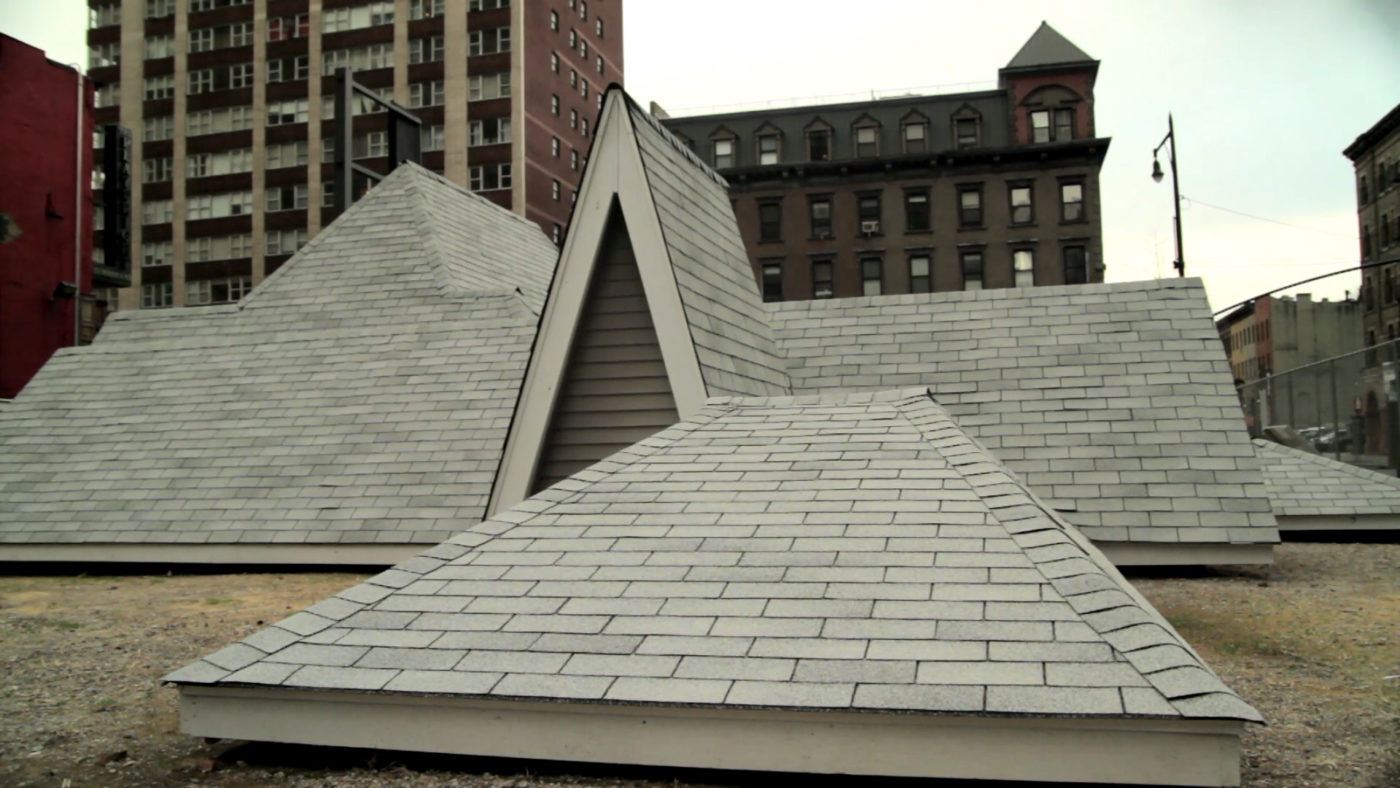Interview
“Desert Rooftops”

Art Production Fund-commissioned public artwork Desert Rooftops by David Brooks. Times Square, Manhattan (11.16.11.) Production still from the Art21 series New York Close Up. © Art21, Inc. 2012.
David Brooks discusses his public artwork Desert Rooftops, featured in the 2012 New York Close Up film “David Brooks Tears the Roof Off.”
ART21: Why is south Florida so important for you? What’s the relationship between New York City and Florida?
BROOKS: South Florida does receive an abnormal amount of traffic from New Yorkers, both in its heydays of development, and today with its proximity to New York as a getaway or cultural siphon. Thus, much to the chagrin of the locals, it is sometimes referred to as the “Sixth Borough.” Ugh. More importantly, south Florida is an extremely rare confluence of land, coral, freshwater, brackish water, saltwater—the nexus of the Atlantic seaboard, Caribbean, Gulf of Mexico and Everglades watershed.
It’s also the site of failed megalomaniac development (developers tried to drain the Everglades around 1904 to build hotels where Florida panthers once roamed), industrial agriculture, an active landing for Cuban raft refugees, a bottlenecked flyway for migratory birds, an economic gateway for South America, the only place on the planet where alligators and crocodiles cohabitate, the host of Art Basel Miami each winter, two of the world’s rarest mammals… I could go on, but I’ll save it for the book. South Florida has become the poster child for environmentalists. They say if we can resolve the problems that exist between nature and culture in south Florida, then we can resolve those issues anywhere on the globe since the situation in south Florida is so extreme on all fronts.

Construction of David Brooks’ Desert Rooftops, 2012. Production still from the Art21 New York Close Up episode, “David Brooks Tears the Roof Off.” © Art21, Inc. 2012.
ART21: …and the connection to Desert Rooftops, the public art project in New York City?
BROOKS: Even though Desert Rooftops is an installation that makes formal and conceptual comparisons between the building vernacular of suburban sprawl and the biological process of desertification (land degradation from over-development and over-cultivation, resulting in arid and depleted landscapes inhospitable to other life), it’s only natural that a discussion came out regarding south Florida when documenting the work. South Florida is a place that has gone through some the biggest population and building booms in the modern era. It’s highly sensitive to fluctuations in the housing market, and of course there’s the recession. These effects are very visible and impact the local ecology rapidly and dramatically, which I’ve been witnessing for the last 20 years. And, this damn sprawl and desertification thing is such an old story, but one whose moral is forgotten faster than a lightning strike on a coconut palm.

Construction of David Brooks’ Desert Rooftops, 2012. Production still from the Art21 New York Close Up episode, “David Brooks Tears the Roof Off.” © Art21, Inc. 2012.
ART21: What was it like working in Times Square?
BROOKS: Intense. We had some interesting “conversations” with the many unions in that part of the city, and eventually came to an “agreement” with them. We were scrutinized by every agency, public and private, within the first fifteen minutes of the first day of work onsite. The dynamic of forces at play in such a hotbed of commerce and real estate is humbling. Also, the passersbys’ comments were worth the whole project: Is this a roofing school? Are these roofs for an underground nightclub? Are these roofs for a new shopping center? When are you going to raise the rooftops? Or, my favorite, when the fire department wanted to do a controlled burn and drill on it… Even the skateboarders had their airtime, as the project’s skate-ability was critiqued on a skater blog site within the first week. That was fulfilling for me, as it finally united all my worlds at once: art, nature, and thrashing.

Construction of David Brooks’ Desert Rooftops, 2012. Production still from the Art21 New York Close Up episode, “David Brooks Tears the Roof Off.” © Art21, Inc. 2012.
ART21: So what happened to the project after it concluded in February 2012?
BROOKS: We went to great lengths to make sure the piece could be disassembled to salvage its materials for reuse. The irony is that these construction materials were donated to not-for-profit organizations that supply building materials for real homes, like Build It Green and Habitat For Humanity. So there is a piece of the sculpture built into someone’s home right now, unbeknownst to them. Ha.




